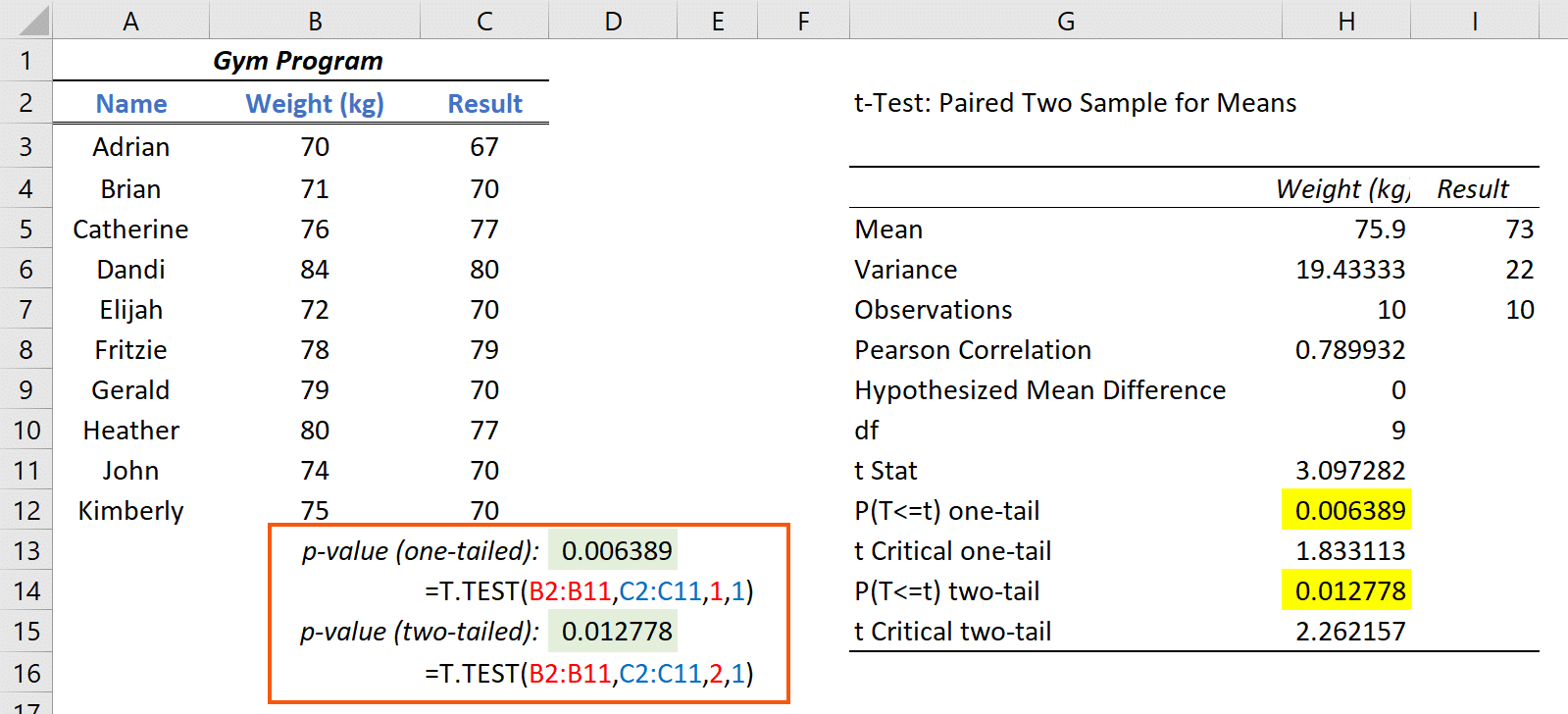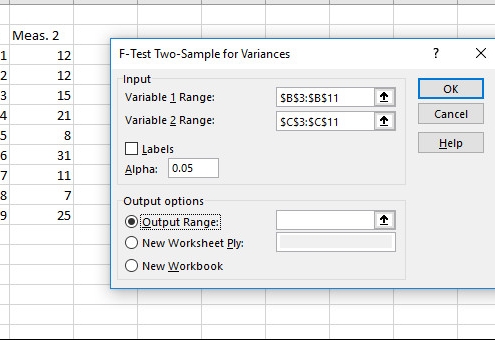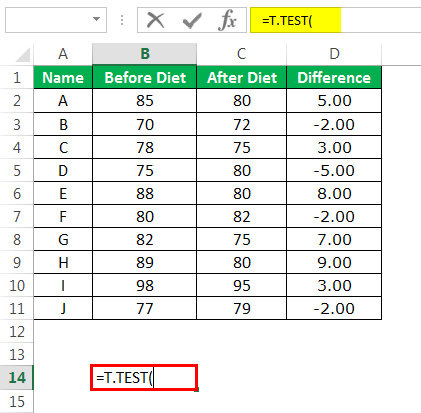
A P Value of less than 0.05 is generally considered statistically significant, indicating that the null hypothesis can be rejected. It is important to note that the P Value is a statistical measure that indicates the probability of obtaining a result as extreme or more extreme than the observed result, assuming that the null hypothesis is true.
#CALCULATE P VALUE IN EXCEL HOW TO#
How to calculate P Value in Excel step by step Therefore, it is crucial to use P Value in conjunction with other statistical measures and to interpret the results with caution. Moreover, P Value can be influenced by various factors, such as multiple testing and publication bias, which can affect the accuracy of the results. Other factors, such as effect size and sample size, should also be considered when interpreting the results. However, it is important to note that P Value should not be the sole determinant of statistical significance. In addition, it helps to assess the results' reliability and credibility, which is essential for drawing valid conclusions. It aids in evaluating hypotheses by calculating the probability that a given result occurred by chance alone. P Value is a crucial part of statistical analysis as it helps us determine the significance of the results. The role of P Value in statistical analysis Therefore, it is important to consider both statistical and practical significance when interpreting study results. A result may be statistically significant, but the observed difference may be too small to be of practical importance. It is important to note that statistical significance does not necessarily mean practical significance. A P Value less than 0.05 means there is less than a 5% chance that the observed difference is due to chance, while a P Value less than 0.01 means there is less than a 1% chance that the observed difference is due to chance. The level of statistical significance is usually determined by the P Value. It is an important concept in data analysis and helps us to determine if the results of a study are trustworthy. Statistical significance is a measure of whether an observed difference is likely due to chance or a real difference. Understanding the concept of statistical significance

Therefore, it is important to interpret P Value in conjunction with effect size and clinical relevance. A result may be statistically significant, but the magnitude of the effect may be small and not clinically meaningful. It is also important to understand that P Value is not a measure of effect size or clinical significance.

Additionally, P Value should not be used as the sole criterion for decision-making, but rather as one piece of evidence in a larger context. Other factors such as sample size, study design, and potential biases must also be taken into consideration. One important thing to note is that P Value alone cannot determine the validity of a study or experiment. P Value is usually set to a threshold of 0.05 or 0.01, which means that results with a P Value less than 0.05 or 0.01 are considered statistically significant, and those above these thresholds are considered non-significant. The smaller the P Value, the more statistically significant the result is. It tells us how likely it is that a result has occurred by chance. P Value is an indispensable tool for making informed statistical decisions. Summary and key takeaways from the article on finding P Value in Excel.Frequently asked questions about finding P Value in Excel.Best practices for presenting P Value results in reports and presentations.Real-world examples of using P Value analysis in scientific research and business decision-making.How to use Excel add-ins and plugins for more complex statistical analysis.Advanced techniques for analyzing P Values and confidence intervals in Excel.Comparing P Values across different datasets and experiments.Tips for choosing the right type of statistical test for your data.Common mistakes to avoid when calculating P Value in Excel.Different ways to interpret P Value results.How to calculate P Value in Excel step by step.The role of P Value in statistical analysis.




 0 kommentar(er)
0 kommentar(er)
